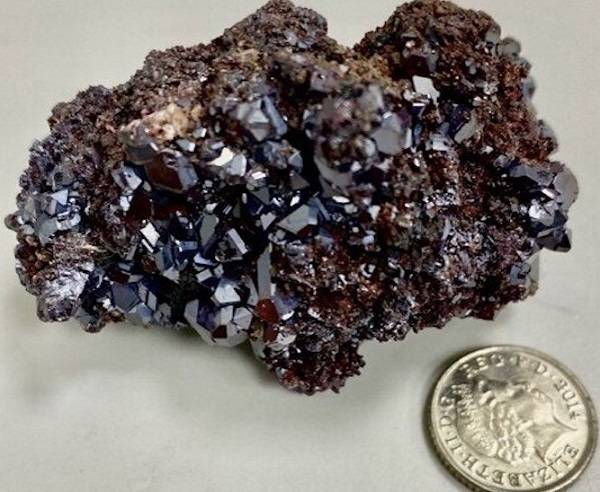
Namibian cuprous oxide gemstone may be key to quantum computers

By Freeman ya Ngulu.
A new study led by the University of St Andrews in the United Kingdom discovered that a special type of light created using an ancient Namibian gemstone could be the key to new light-based quantum computers that could solve long-standing scientific mysteries.
The study discovered that it is possible to create Rydberg polaritons, the largest hybrid particles of light and matter ever created, using a naturally mined cuprous oxide (Cu2O) gemstone from Namibia.
Rydberg polaritons are constantly switching from light to matter and back. Light and matter are like two sides of the same coin in Rydberg polaritons, and the matter side is what causes polaritons to interact with one another.
This interaction is critical because it enables the development of quantum simulators, a type of quantum computer in which information is stored in quantum bits. Unlike binary bits in classical computers, which can only be 0 or 1, quantum bits can be an infinite number of values between 0 and 1. As a result, they can store much more information and perform multiple processes at the same time.
Investigating scientific mysteries:
The researchers behind the discovery explain in a paper published in the journal ‘Nature Materials’ that this capability could allow quantum simulators to solve important mysteries in physics, chemistry, and biology, such as how to make high-temperature superconductors for high-speed trains, how to make cheaper fertilizers potentially solving global hunger, or how proteins fold, making it easier to produce more effective drugs.
“Creating a quantum simulator with light is the holy grail of science,” said project leader Hamid Ohadi in a press release. “We’ve made a huge step forward by developing Rydberg polaritons, which are the key component.”
The researchers trapped light between two highly reflective mirrors to create Rydberg polaritons with a cuprous oxide crystal discovered in a Namibian stone quarry.
A cuprous oxide crystal mined in Namibia was thinned and polished to a 30-micrometre slab before being sandwiched between the two mirrors to produce Rydberg polaritons 100 times larger than previously demonstrated.
Following this work, the team decided to refine these methods further to investigate the possibility of creating quantum circuits, which are the next component of quantum simulators.

Cuprous oxide is a mined crystal from Namibia that is used to create Rydberg polaritons. (Photograph courtesy of the University of St Andrews).











































